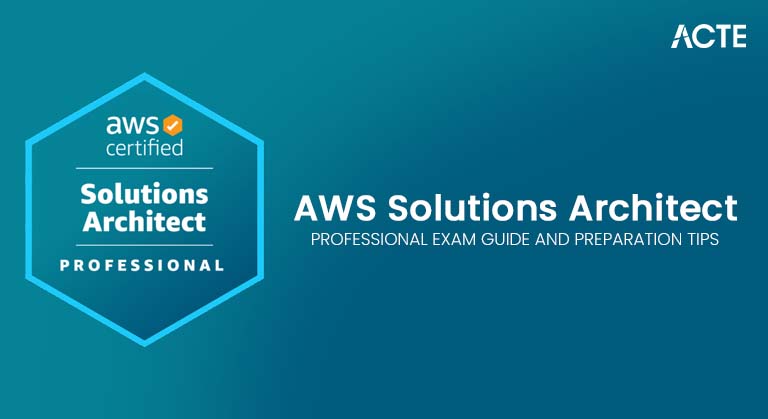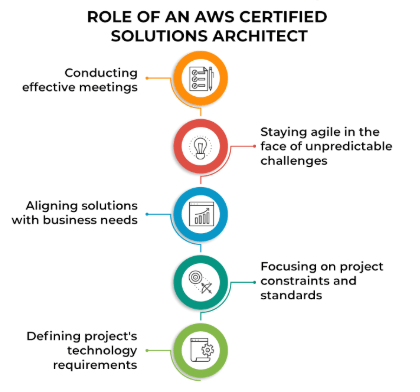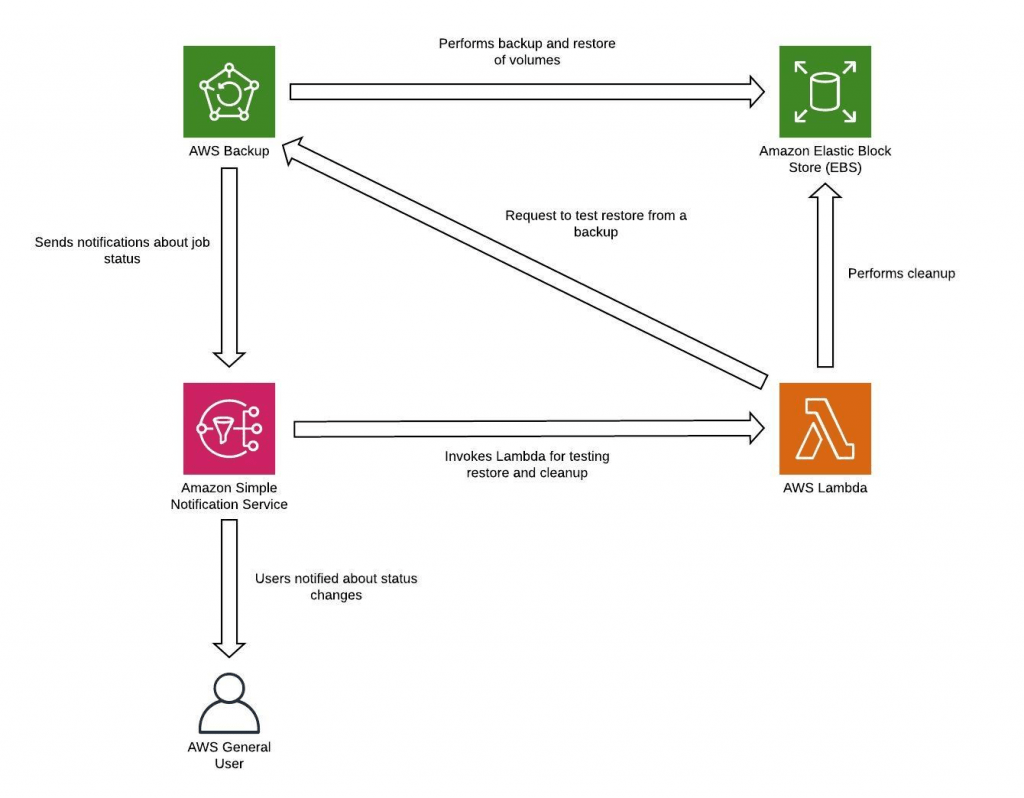
- Introduction to AWS Solutions Architect Professional Exam
- Eligibility and Prerequisites
- Exam Format and Structure
- Key Domains and Exam Objectives
- AWS Core Services and Advanced Architectures
- High Availability and Disaster Recovery in AWS
- Security Best Practices for AWS Architecture
- Cost Optimization and AWS Billing Strategies
- Recommended Study Resources and Preparation Tips
- Career Benefits of AWS Solutions Architect Professional Certification
Introduction to AWS Solutions Architect Professional Exam
The AWS Certified Solutions Architect – Professional exam is designed for individuals with significant experience developing distributed systems and applications on the Amazon Web Services (AWS) platform. As one of the most sought-after certifications in cloud computing, this exam validates your ability to design and deploy scalable, fault-tolerant, and highly available systems on AWS. Achieving this certification proves your expertise in advanced AWS concepts, such as high availability, disaster recovery, security, and cost optimization, and can significantly enhance your career prospects in cloud architecture. This guide will cover everything you need to know about the AWS Solutions Architect Professional exam, including eligibility, exam structure, preparation strategies, and how passing the exam can benefit your career.
Eligibility and Prerequisites
Before attempting the AWS Certified Solutions Architect Professional exam, candidates must meet certain eligibility requirements to ensure they are adequately prepared for its advanced nature.
- AWS Certified Solutions Architect – Associate: While not a strict prerequisite, it is highly recommended that you have passed the AWS Certified Solutions Architect – Associate exam before attempting the professional-level exam. The professional exam builds upon the skills and knowledge assessed in the associate exam.
- Experience: AWS recommends that candidates have at least two or more years of hands-on experience designing and deploying cloud architecture on AWS. This includes experience managing and operating systems and applications in the AWS Cloud and understanding advanced networking, security, and operational concepts.
- Familiarity with AWS Core Services: You should have deep knowledge of key AWS services, including compute (EC2), storage (S3, EBS), databases (RDS, DynamoDB), and networking (VPC, Route 53), as well as more advanced services such as Lambda, CloudFormation, and Elastic Load Balancing.

Exam Format and Structure
The AWS Solutions Architect – Professional exam is a thorough assessment designed to test your expertise in designing, deploying, and optimizing AWS solutions. The exam consists of 75 questions, which include both multiple-choice and multiple-response questions. This variety allows for comprehensively evaluating your skills and knowledge in real-world scenarios. The total duration of the exam is 180 minutes (3 hours), providing you with sufficient time to carefully read and answer each question, ensuring you can give thoughtful and accurate responses. The questions cover a broad range of topics related to AWS architecture, testing your ability to design effective solutions, troubleshoot complex issues, and optimize AWS services for performance and cost-efficiency. You’ll be expected to have a deep understanding of AWS services and how to apply them in practical, real-world situations. The exam evaluates your capacity to solve problems involving cloud infrastructure, security, cost management, and scalability, among others. To pass the exam, you’ll need to score a minimum of 750 out of 1000 points. While AWS provides this benchmark, the exact passing score may vary slightly. It’s important to note that the passing score is not officially disclosed by AWS. Additionally, the exam costs USD 300, and it is advisable to prepare thoroughly before attempting it.
Key Domains and Exam Objectives
The AWS Solutions Architect – Professional exam assesses various domains, each crucial to your ability to design complex AWS solutions. Here are the key domains and their objectives:
-
Design for Organizational Complexity (26%)
- Design and implement multi-account AWS environments.
- Architect large-scale AWS organizations with cross-account access.
- Implement complex networking configurations using VPCs, subnets, and security groups. Design for New Solutions (29%)
- Design highly available and scalable systems using AWS services.
- Architect for performance efficiency and cost-effectiveness.
- Implement solutions for high availability, fault tolerance, and disaster recovery.
- Select appropriate AWS services for different architectural designs. Migration Planning (25%)
- Planned and executed migrations of on-premises applications to AWS.
- Analyze existing architectures and identify migration strategies.
- Implement a lift-and-shift, re-platforming, and refactoring strategy. Cost and Performance Optimization (15%)
- Identify and implement cost-optimization strategies for AWS services.
- Utilize tools like AWS Cost Explorer and Trusted Advisor to manage and track costs.
- Optimize workloads for performance and cost efficiency. Continuous Improvement for Existing Solutions (5%)
- Identify opportunities to optimize existing solutions for performance, security, and cost.
- Monitor and assess the performance of deployed systems.
AWS Core Services and Advanced Architectures
To successfully pass the AWS Solutions Architect – Professional exam, you need an in-depth understanding of both core AWS services and more advanced AWS architectures:
Core AWS Services:- Amazon EC2: Compute service for virtual servers.
- Amazon S3: Object storage service for scalability and durability.
- Amazon RDS: Managed relational databases (e.g., MySQL, PostgreSQL, Oracle).
- Amazon VPC: Virtual networking, including subnets, security groups, and routing tables.
- Amazon Route 53: DNS service for routing traffic to your application. Advanced AWS Architectures:
- Elastic Load Balancing (ELB) and Auto Scaling: Design architectures that automatically scale based on demand.
- AWS Lambda: Serverless architecture for building scalable applications without managing servers.
- Amazon CloudFront: Content delivery network for distributing content globally.
- AWS CloudFormation: Automate infrastructure as code for resource provisioning and management.
- AWS Direct Connect and VPN: Hybrid cloud solutions for connecting on-premises environments with AWS.
High Availability and Disaster Recovery in AWS
The ability to design for High Availability (HA) and Disaster Recovery (DR) is a crucial aspect of the AWS Solutions Architect Professional exam. In this domain, you are required to showcase your proficiency in architecting resilient systems that maintain uptime and protect data integrity under various conditions. The exam tests your knowledge and skills in designing systems that remain available and recover quickly in the event of failure. Designing for high availability involves utilizing multiple Availability Zones (AZs) and Regions to create fault-tolerant architectures. You must understand how to distribute resources across different AZs to minimize the impact of localized failures. Elastic Load Balancers (ELBs) are essential for distributing incoming traffic evenly across instances, improving both fault tolerance and scalability. Additionally, Auto Scaling plays a key role by automatically adjusting the number of instances based on incoming traffic, ensuring that applications remain responsive under varying load conditions. When it comes to disaster recovery, you need to know how to implement effective backup and replication strategies using AWS services such as AWS Backup, Amazon RDS, and Amazon S3. These services help ensure that critical data is backed up and can be quickly restored when needed. Moreover, understanding cross-region replication is essential for critical applications and data, allowing systems to remain operational even if a failure occurs in one region. Multi-region architectures are designed to ensure that applications continue to function even in the case of a regional outage, providing enhanced reliability and availability across different geographical locations.

Security Best Practices for AWS Architecture
Security is paramount in cloud architecture, and the AWS Solutions Architect – Professional exam tests your knowledge of securing AWS environments. Key areas include:
Identity and Access Management (IAM):- Use IAM roles, policies, and groups to control access to AWS resources.
- Implement least privilege access control for users and services. Data Security:
- Encryption for data at rest and in transit (e.g., using KMS, SSL/TLS).
- Secure network traffic using VPC Security Groups and Network ACLs. Compliance and Auditing:
- Implement AWS CloudTrail and AWS Config for monitoring and logging.
- Comply with industry standards like HIPAA, PCI-DSS, and GDPR.
Cost Optimization and AWS Billing Strategies
The AWS Solutions Architect – Professional exam places significant emphasis on cost optimization, which is crucial for efficiently managing and scaling cloud-based solutions while keeping expenditures under control. Understanding how to optimize resources and costs is vital in designing robust, cost-effective architectures on AWS. Cost optimization strategies involve selecting the right pricing model based on the use case. For instance, on-demand instances are ideal for short-term, unpredictable workloads, while reserved instances offer cost savings for long-term, steady-state usage. Spot Instances provide the most cost-effective option for flexible and interruptible workloads, but they come with the risk of termination when AWS needs the capacity. In addition to choosing the right pricing models, utilizing Auto Scaling and Elastic Load Balancing is essential for optimizing resource utilization. These services automatically adjust the infrastructure based on demand, ensuring that resources are only used when necessary and preventing over-provisioning. AWS Trusted Advisor offers recommendations for cost optimization by suggesting best practices for resource utilization, security, and performance. Understanding the pricing models for different AWS services and utilizing these tools will help you track and allocate costs efficiently, ensuring that your AWS infrastructure is both cost-effective and scalable.
Recommended Study Resources and Preparation Tips
To prepare for the AWS Solutions Architect – Professional exam, it’s crucial to use a combination of study resources:
AWS Training:- Enroll in the official AWS training courses, including Advanced Architecting on AWS.
- Take part in AWS webinars, boot camps, and workshops. AWS Whitepapers:
- Read AWS whitepapers on architecture best practices, security, and cost optimization. AWS Documentation:
- Review the official AWS documentation for services and features covered in the exam. Books:
- Consider books like “AWS Certified Solutions Architect Professional Study Guide” by Ben Piper and David Clinton. Online Courses:
- Platforms like A Cloud Guru, Linux Academy, or Udemy offer courses specifically designed for the Solutions Architect – Professional exam.
Career Benefits of AWS Solutions Architect Professional Certification
Achieving the AWS Certified Solutions Architect – Professional certification can significantly enhance your career prospects and provide several key benefits. One of the most notable advantages is the potential for a higher salary. AWS-certified professionals typically earn more than their non-certified peers due to the advanced knowledge and skills required to pass the exam. Organizations recognize the value of certified experts in cloud architecture, leading to increased compensation for those who hold the certification. The certification also plays a critical role in career advancement. It demonstrates your ability to design and manage complex AWS environments, positioning you as a highly skilled professional in the cloud computing industry. This makes you a valuable asset to employers seeking experienced architects who can optimize and scale cloud solutions effectively. It can also open doors to senior-level positions and more challenging roles within the organization. Additionally, the AWS Certified Solutions Architect – Professional certification offers industry recognition. As AWS continues to dominate the cloud computing space, possessing this certification proves your expertise in working with the most widely used cloud platform. It establishes you as a trusted professional who is up-to-date with the latest AWS technologies and best practices, helping you stand out in a competitive job market. With cloud adoption growing across industries, this certification enhances your credibility and boosts your professional reputation globally.





